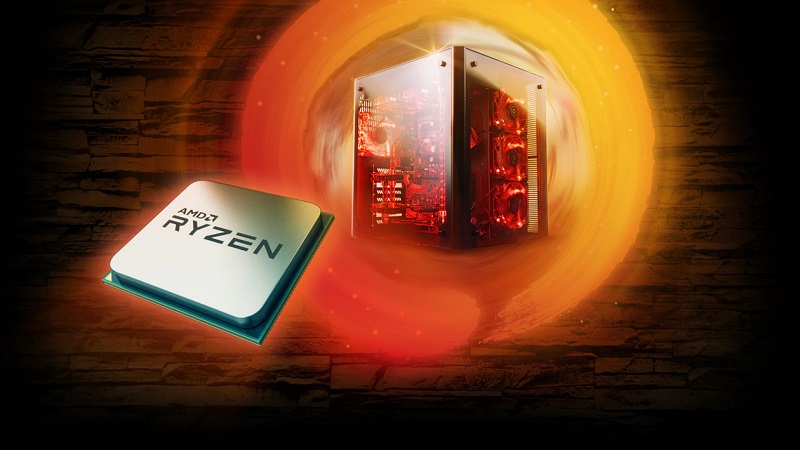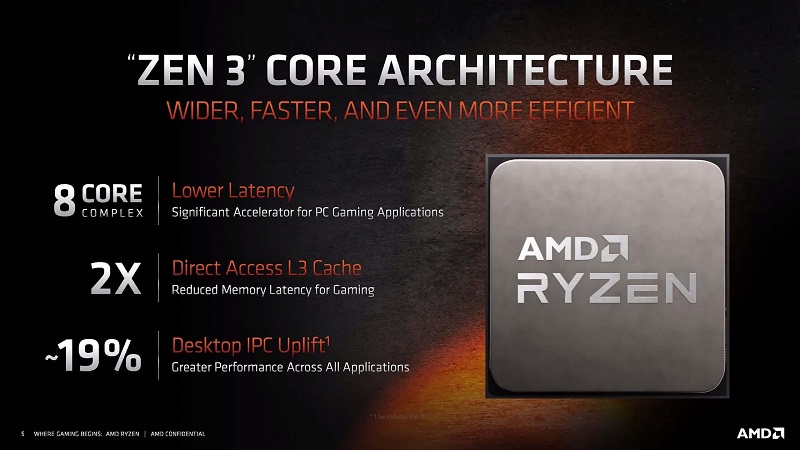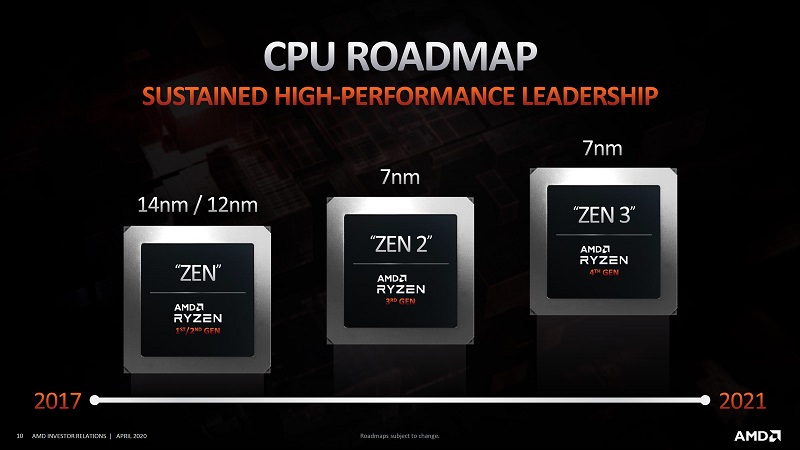
Intel may have just shown off some of its plans for new powerful 10nm processors, but its competitor AMD has long since been doing a better job at making more compact processors. AMD has announced a new range of 7nm Ryzen 5000 mobile processors, that are based on the company’s previously announced Zen 3 architecture. I guess much like every other processor company, they’ll claim that it’ll be “the most powerful PC processor ever built.” Claims that both Apple and Intel have both made, so the proof will need to be in the pudding on this one.
As with the previous generation, the 5000 range will also be split into two categories: The H-series for laptops aimed at providing a little more juice and the U-series, aimed at the ultraportable market for improved battery life. Both series will come in the traditional Ryzen 3, Ryzen 5, Ryzen 7, and Ryzen 9 tiers respectively.

Headlining the U-series is the eight-core, 16-thread Ryzen 7 5800U, with 1.9GHz clock speeds that can boost up to 4.4 GHz – a remarkable boosted speed though one that it wouldn’t likely be able to maintain for very long. Not only is this enough to provide any ultrathin notebook with some impressive power, but the company claims it can deliver up to 17.5 hours of general-usage battery life and 21 hours of movie playback, which is remarkable battery life for a processor as powerful as they claim it will be.
For the H-series, the range is headed up by the Ryzen 9 5980HS, which also features eight cores and 16 threads, but with 3.0Ghz clock speeds boosting up to 4.8GHz. The company claims that it beats the Intel processors in benchmark tests, but this doesn’t include Intel’s new range of processors and these tests are also largely dependent on the rest of the hardware components used, so I wouldn’t read too much into them just yet though AMD definitely had the better performance in last’ year’s chips and so I am inclined to believe them again.

New to the H-series though are the HX chips which are aimed at the gaming market and increase the chip’s power to 45W, though these don’t have the same powerful integrated graphics as the Intel chips and you would be expected to have a graphics cards exclusively if you want to take gaming seriously.
A breakdown of different chip available are detailed below, sans pricing and release details which AMD has yet to announce:
AMD RYZEN 5000
| Model | Cores / Threads | TDP (Watts) | Boost / Base Frequency (GHz) | Cache (MB) |
| AMD Ryzen 9 5980HX | 8C / 16T | 45W+ | Up to 4.8 / 3.3 GHz | 20 |
| AMD Ryzen 9 5980HS | 8C / 16T | 35W | Up to 4.8 / 3.0 GHz | 20 |
| AMD Ryzen 9 5900HX | 8C / 16T | 45W+ | Up to 4.6 / 3.3 GHz | 20 |
| AMD Ryzen 9 5900HS | 8C / 16T | 35W | Up to 4.6 / 3.0 GHz | 20 |
| AMD Ryzen 7 5800H | 8C / 16T | 45W | Up to 4.4 / 3.2 GHz | 20 |
| AMD Ryzen 7 5800HS | 8C / 16T | 35W | Up to 4.4 / 2.8 GHz | 20 |
| AMD Ryzen 5 5600H | 6C / 12T | 45W | Up to 4.2 / 3.3 GHz | 19 |
| AMD Ryzen 5 5600HS | 6C / 12T | 35W | Up to 4.2 / 3.0 GHz | 19 |
| AMD Ryzen 7 5800U | 8C / 16T | 15W | Up to 4.4 / 1.9 GHz | 20 |
| AMD Ryzen 7 5700U | 8C / 16T | 15W | Up to 4.3 / 1.8 GHz | 8 |
| AMD Ryzen 5 5600U | 6C / 12T | 15W | Up to 4.2 / 2.3 GHz | 19 |
| AMD Ryzen 5 5500U | 6C / 12T | 15W | Up to 4.0 / 2.1 GHz | 8 |
| AMD Ryzen 3 5300U | 4C / 8T | 15W | Up to 3.8 / 2.6 GHz | 6 |
While consoles clearly have their generations, with the PC chips improving every year, they will continue to always be well ahead in terms of performance provided you have the bank balance to afford these and the myriad of other new components that keep on coming out.
Last Updated: January 13, 2021




















